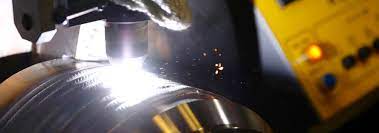Outline of Weld Overlay
Weld Overlay (WOL), otherwise called PTA Over Tile cladding, hardfacing, weld cladding, or weld overlay cladding, is an interaction where at least one metals are consolidated by means of welding to the outer layer of a base metal as a layer. This is regularly done to work on the material by adding either a consumption safe or hardfacing layer to it. Surfaces ready in this manner can even be exceptionally modified by layering and alloying various materials together.
There exist a few distinct techniques for weld overlay, each with their own exceptional applications and employments. Settling on a particular PTA Over Tile method is dependant on the entrance, welding position, composite sort, and disintegration pace of the part alongside one's own monetary circumstance. The primary strategies for weld overlay are: protected metal circular segment welding, CO2 welding, Metal Inert Gas (MIG) welding/Tungsten Inert Gas (TIG) welding, Submerged curve welding, and Plasma Transferred Arc (PTA) welding.
The most well-known of these is safeguarded metal circular segment Downhole Tools welding, which is most ordinarily utilized with ferrous materials and utilizes bars as weld material. For this technique the center wire is covered with a covering that adds uncommon components to weld metal and the weld metal is ensured by slag made during welding.
With CO2 Downhole Tools welding, which is here and there known as Metal Active Gas (MAG) or self-loader welding, the CO2 safeguard gas climate shields the material from oxidation. For this interaction weld materials can comprise of strong wire, metal-cored wire, and motion cored wire. Since welding wire is utilized for the weld material, ceaseless welding is conceivable.
Metal Inert Gas (MIG) welding, which is here and there known as Tungsten Inert Gas (TIG) or essentially embed gas welding, is generally as old as programmed welding aside from that during this cycle the region to be welded is protected by an inactive gas. It is principally utilized with non-ferrous materials.
The last technique is Plasma Transferred Arc (PTA) welding. Like TIG welding, a bend is created from a non-consumable tungsten anode and welding is performed with motion provided remotely into the circular segment. This technique is potentially the most perplexing however it is fit for overlaying of hard complex carbide combinations, something hard to do with the vast majority of different strategies. Since with PTA welding the weld material is a powder, these material powders can be mixed to make unique transition for simple overlay welding too.
Weld overlay is ordinarily utilized inside the gas business and can be utilized on parts as different as lines, fittings, valves, and vessels. While most parts have a specific measure of erosion stipend worked in, wastage rates can in any case be over the top for specific materials. Hence weld overlay gives surface security while as yet permitting the inside part sufficient solidarity to fulfill suitable codes and guidelines.
Comments
Post a Comment